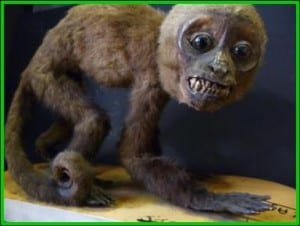Specimen of the Week: Week Sixty-Four
By Emma-Louise Nicholls, on 31 December 2012
 Back in the days when ancient Rome was modern, to them, the Romans had a whole host of gods and goddesses. My personal favourite is Mercury, god of travel. If he exists, he has indeed been kind to me during my life time. I also like him because he is allegedly mischievous, a character trait I can empathise with. New Year’s day however, belongs to a different god. Janus, is reportedly the god of transitions and new beginnings. He also looks after gates, doors, and doorways, though in a more metaphorical than architectural sense I suspect. Janus has two heads, a useful trait that allows him to look both to the future and the past, at the same time. The month of January was so named by the Romans. It marked the beginning of the year and it made sense therefore to use it to honour the god of new beginnings; Janus. Sadly, we do not have a two headed god of new beginnings in the Grant Museum. But we do have another two-headed beasty (and naturally so, not X-Men style crazy genes so) which is a super species worth peering through hangover addled eyes to read about. This week’s Specimen of the Week is… (more…)
Back in the days when ancient Rome was modern, to them, the Romans had a whole host of gods and goddesses. My personal favourite is Mercury, god of travel. If he exists, he has indeed been kind to me during my life time. I also like him because he is allegedly mischievous, a character trait I can empathise with. New Year’s day however, belongs to a different god. Janus, is reportedly the god of transitions and new beginnings. He also looks after gates, doors, and doorways, though in a more metaphorical than architectural sense I suspect. Janus has two heads, a useful trait that allows him to look both to the future and the past, at the same time. The month of January was so named by the Romans. It marked the beginning of the year and it made sense therefore to use it to honour the god of new beginnings; Janus. Sadly, we do not have a two headed god of new beginnings in the Grant Museum. But we do have another two-headed beasty (and naturally so, not X-Men style crazy genes so) which is a super species worth peering through hangover addled eyes to read about. This week’s Specimen of the Week is… (more…)
 Close
Close




